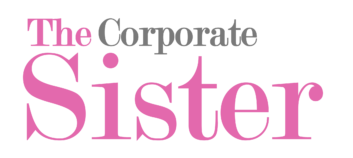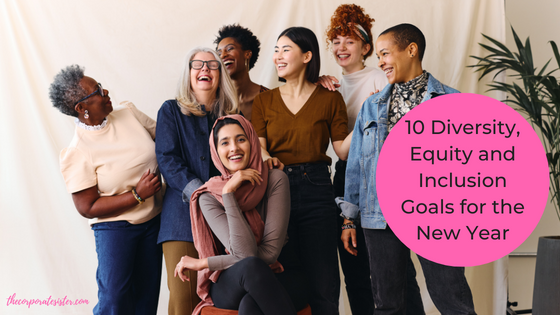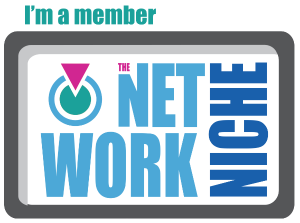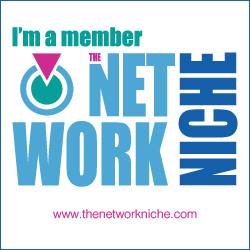Many are the professional goals set at the beginning of each new year, both at the individual and at the company level. However, little attention is often paid to diversity and inclusion goals as part of these. Yet, diversity and inclusion are an important part of each and every one of our careers, as they also benefit us all, including the companies and organizations we work in. This is especially important for working women and mothers, who are among the minorities suffering from the very lack or application of diversity and inclusion efforts.
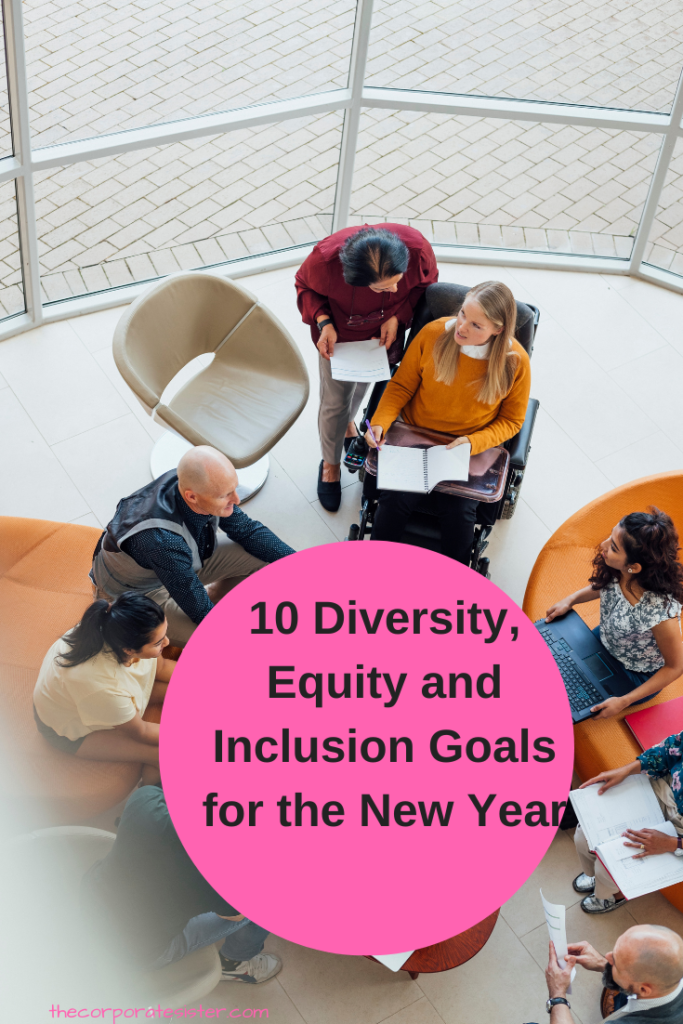
As much as Diversity, Equity and Inclusion (DEI) efforts have been on the rise lately, what with the COVID pandemic and the recent social justice tragedies, including Georges Floyd’s murder, much work still has to be done in this realm. Moving from an obscure, often misunderstood concept adorned with endless speeches, statistics and numbers, to an actual impactful movement is still very much a work in progress. The reality is, the work of Diversity, Equity and Inclusion is a never ending one. Hence the need for us all to continuously recommit ourselves to it…
Here are 10 DEI goals to consider in our own careers, departments, and or/or organizations:
- Support a DEI mindset and awareness
More than a set of precepts or trainings, Diversity Equity and Inclusion is a mindset first and foremost. One that acknowledges, respects and celebrates all forms of diversity, as well as promotes equity and inclusion for all. Yet, this can’t be fully possible without the proper awareness and education, which goes beyond mandatory trainings or continuing professional education. Both DEI mindset and awareness are rather cultivated through and as part of the individual and communal culture and anchored in conscious action. Some powerful books to learn more about DEI in the workplace include The Leaders’ Guide to Unconscious Bias: How to Reframe Bias, Cultivate Connection and Create High Performing Teams by Pamela Fuller and Mark Murphy with Anne Chow, How to be an Inclusive Leader, Second edition: Your role in Creating Cultures of Belonging where Everyone can Thrive by Jennifer Brown, and We Can’t Talk about That at Work!: How to Talk about Race, Religion, Politics, and Other Polarizing Topics by Mary Frances Winters.
What does this look like for you? It looks like challenging oneself and others to learn about other cultures around, as well as take action towards being and encouraging others to be more inclusive and equitable.
For me, it looks like teaching and writing with a conscious awareness of my audience, and a commitment to take action to develop more equitable and inclusive content. What does it look like for you and your department or organization?
- Support diversity and inclusion in your teams
Another important DEI goal is the support of diversity and inclusion initiatives in the environments that we’re part of. This can take many forms, from becoming an ally to an under-represented minority, to advocating in favor of increased diversity and inclusion. Your support can make a world of difference to one person, and by extension to an entire team or organization.
What is your support of DEI be this year?
- Support the hiring AND retention of more diverse employees
Research shows increased diversity, especially gender diversity, contributes to greater innovation and better business results overall. However, this is mainly achieved through diverse and equitable representation, which involves hiring and retaining diverse employees. Unfortunately, hiring and retention of under-represented minorities is often lagging, and not a priority for many. Even when diverse hiring is encouraged and implemented, the lack of a diverse and equitable culture prevents the retention of under-represented minorities, which perpetuates and even compounds the problem.
If, in your individual, departmental and/or organizational capacity, you are able to support and implement the hiring and retention of more diverse employees, you’d be breaking one of the most powerful barriers to effective DEI. It may be recommending a qualified colleague for a position, expanding the pool of candidates considered for open positions, or serve as an ally to a peer. Some tech tools that can also help with this include Applied, a platform aimed at removing bias from the hiring process, as well as diversity-focused online job boards.
How can you support the hiring and retention of more diverse employees this year?
- Focus on the impact rather than DEI numbers
The hype around DEI in recent years is undeniable. As a result of it, many organizations have focused more on inflated DEI numbers in terms of diversity, equity and inclusion metrics, than on the real impact of their DEI efforts. Increasing diverse employees’ numbers, or the number of DEI initiatives and trainings is a good start. However, ensuring a true culture of diversity, equity and inclusion, having diverse representation at the highest levels of management, and fostering a genuine sense of belonging for all, are way more impactful measures.
This impact can be achieved both at the individual and organizational level. Being willing and able to nurture an atmosphere of belonging, to engage in constructive dialogue around DEI, and strive for effective representation, are ways that we can all contribute to creating more DEI impact.
How can you create more DEI impact beyond the numbers this year?
- Help someone through mentorship, sponsorship and allyship
One of the biggest obstacles to increased diversity, equity and inclusion, is the lack of support for under-represented minorities. In Lean In’s 2022 Women in the Workplace report, many women, especially Black and Latina women, report not being supported by their managers. This is where diverse forms of support can help.
Some of the most common forms of support include being a mentor, sponsor or ally. A mentor is someone providing guidance and knowledge to someone else. A sponsor goes a bit further by becoming an advocate for their proteges. An ally, on the other hand, is someone who strives to better understand others’, especially those from marginalized groups, circumstances.
In your capacity, whether or not as a manager, how could you support another employee through mentorship, sponsorship or allyship?
- Participate in or create employee resource groups
Employee Resource Groups (ERGs) aim to connect employees sharing one or many affinities within an organization. This way, they support employees and their development, and help to build more inclusive cultures. Some common ERGs bring together people of color, women, LGBTQ+ employees, single moms, caregivers, as well as employees with disabilities, to cite a few.
Participating in or even creating an ERG is an effective way to advance DEI goals in your organization.
Will you be participating or creating and ERG this year?
- Create a sense of community
Creating a sense of community can be as simple as showing interest in another’s culture or background, welcoming newcomers, showing care, or recognizing individuals for their contributions. This is something that can be done at the individual and organizational level, and doesn’t cost much. As a leader, teaching others in your team, department or organization to be more inclusive can also go a long way.
How can you create more of a sense of community this year?
- Listen!
On underrated aspect of DEI is the willingness and ability to listen to, and hear, others’ voices. Too often, employees’ concerns about DEI are quick to be dismissed, or buried under layers of unnecessary bureaucracy. Change happens when each and every one of us is willing to listen to others, especially others from marginalized groups whose experiences and circumstances we may be unfamiliar with. Therein lies the not-so-secret secret of deciphering and advancing the monumental cause of DEI.
To help in this, Allie, a chatbot integrated with Slack, helps in sending out Diversity and Inclusionn surveys, welcoming employee feedback, and even posting educational articles.
How will you manage to listen more to others in and outside of the workplace?
- Link compensation to diversity metrics
Compensation deeply affects people, not just for obvious socio-economic reasons, but also at a much deeper level that can be tied to self-esteem and self-worth. This is where much can be taught and achieved in terms of DEI advancement by tying diversity metrics to performance and compensation. Making DEI an integral part of performance and compensation emphasizes its importance, and has the potential of creating more of an impact.
In your own capacity, how can you integrate DEI metrics into your own performance? As a leader, how can you encourage and implement the use of DEI metrics as part of compensation and performance?
- Be consistent!
Last but not least, committing to more consistent DEI efforts, albeit in a sustainable and effective manner, is a major goal to strive towards. Having a plan, whether personal or at the department/organizational, can help in this regard.
How will you manage to be more consistent with your DEI efforts?
Overall, setting diversity, equity and inclusion goals for the New Year, whether at the individual or departmental/organizational level, is a process each and every one of us can undertake. In the long term, these should be goals that ought to be incorporated in everyone’s professional goals.
What are your DEI goals this year?
With gratitude,
The Corporate Sister
